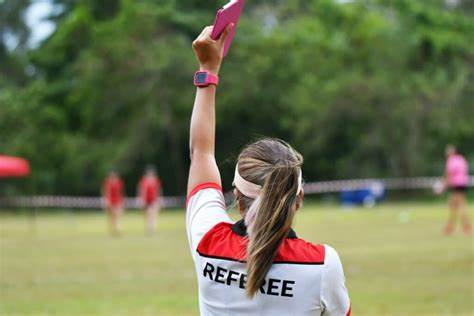Women’s Football Rules Rules

Women's Football Rules Rules
In recent years, women’s football has seen a remarkable surge in popularity and recognition worldwide. With this growth comes an increased interest in understanding the rules that govern the game. Whether you’re a seasoned fan or a newcomer to the sport, it’s essential to grasp the nuances of women’s football rules to fully appreciate the excitement and strategy unfolding on the pitch.
The Pitch and Field of Play
The dimensions of a women’s football pitch adhere to standard regulations set by FIFA, governing body of world football. A standard pitch measures approximately 100 to 110 meters in length and 64 to 75 meters in width. These dimensions provide an optimal playing surface for teams to showcase their skills and tactics. The field is typically marked with lines delineating boundaries, penalty areas, and other key zones crucial for gameplay.
Players and Positions
A women’s football team consists of eleven players on the field at any given time, including one goalkeeper. The remaining players are strategically positioned across the pitch, assuming roles such as defenders, midfielders, and forwards. Each position carries specific responsibilities and demands unique skill sets. Understanding the dynamics of player positions is vital for both players and spectators alike to comprehend team strategies and formations.

Basic Rules of the Game
Women’s football follows a set of fundamental rules designed to ensure fair play and competitive balance. These rules encompass various aspects of gameplay, including ball handling, fouls, and scoring. For instance, players are prohibited from using their hands or arms to handle the ball, except for the goalkeeper within the penalty area. Fouls such as tripping, pushing, or dangerous play result in free kicks or penalties, depending on the severity of the infraction.
Offside Rule
The offside rule is a crucial element of women’s football that often sparks debates and controversies among players and fans. In essence, a player is deemed offside if they are in a position closer to the opponent’s goal line than both the ball and the second-to-last defender when the ball is played to them by a teammate. Understanding the intricacies of the offside rule is essential for players to time their runs effectively and for officials to make accurate judgments during matches.
Duration of the Game
Women’s football matches typically consist of two halves, each lasting 45 minutes, with a halftime interval in between. However, the duration of matches may vary depending on the level of competition and governing regulations. In the event of a tie at the end of regular time, extra time or a penalty shootout may be employed to determine the winner, especially in knockout competitions.
Referee and Officials
Central to the enforcement of women’s football rules are the referees and other officials who oversee matches. Referees are responsible for interpreting and enforcing the laws of the game, ensuring fair play, and maintaining order on the pitch. They have the authority to administer penalties for rule infractions, such as issuing yellow or red cards for misconduct. Additionally, assistant referees assist the main referee in making offside calls and observing other aspects of play along the touchlines. Their presence ensures that matches are conducted with integrity and adherence to the established rules, fostering an environment conducive to competitive and enjoyable football.
Substitutions and Player Management
Throughout a women’s football match, teams have the option to make substitutions to manage player fatigue, injuries, or tactical adjustments. Substitutions allow coaches to introduce fresh legs onto the field or change the dynamics of play by bringing in players with different skill sets. However, there are specific rules governing when and how substitutions can occur to prevent teams from gaining unfair advantages or disrupting the flow of the game. Understanding the intricacies of substitution rules is crucial for coaches to optimize their team’s performance and for players to adapt to changing game scenarios effectively.
Conclusion
As women’s football continues to thrive on the global stage. Familiarizing oneself with the rules and regulations governing the sport becomes increasingly important. Whether you’re a player, coach, or spectator. A solid understanding of women’s football rules enhances your enjoyment and appreciation of the game. So, next time you watch a match or step onto the pitch, keep these rules in mind, and you’ll find yourself immersed in the beauty and excitement of women’s football like never before.





